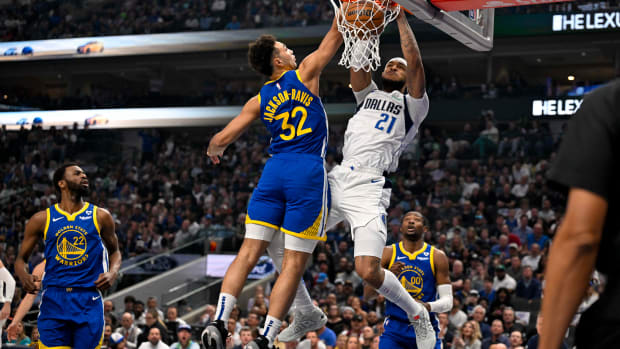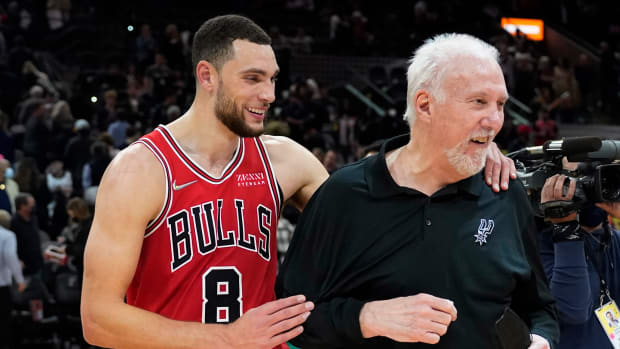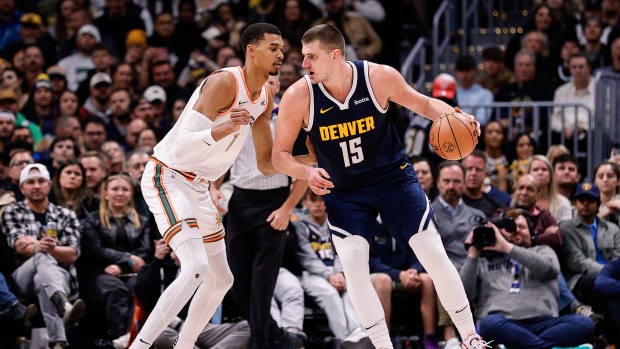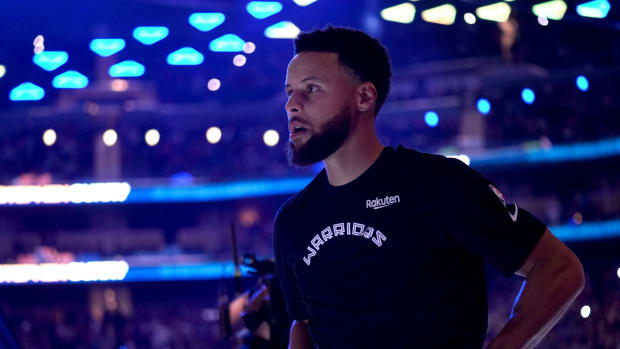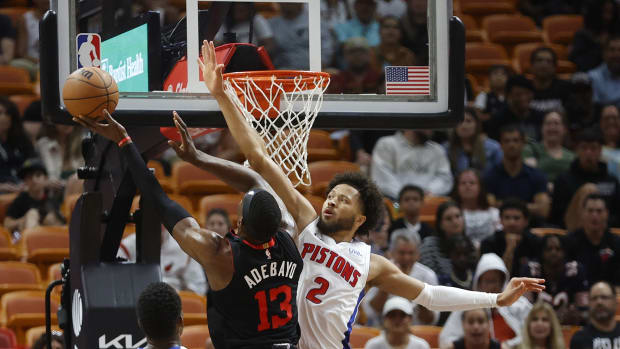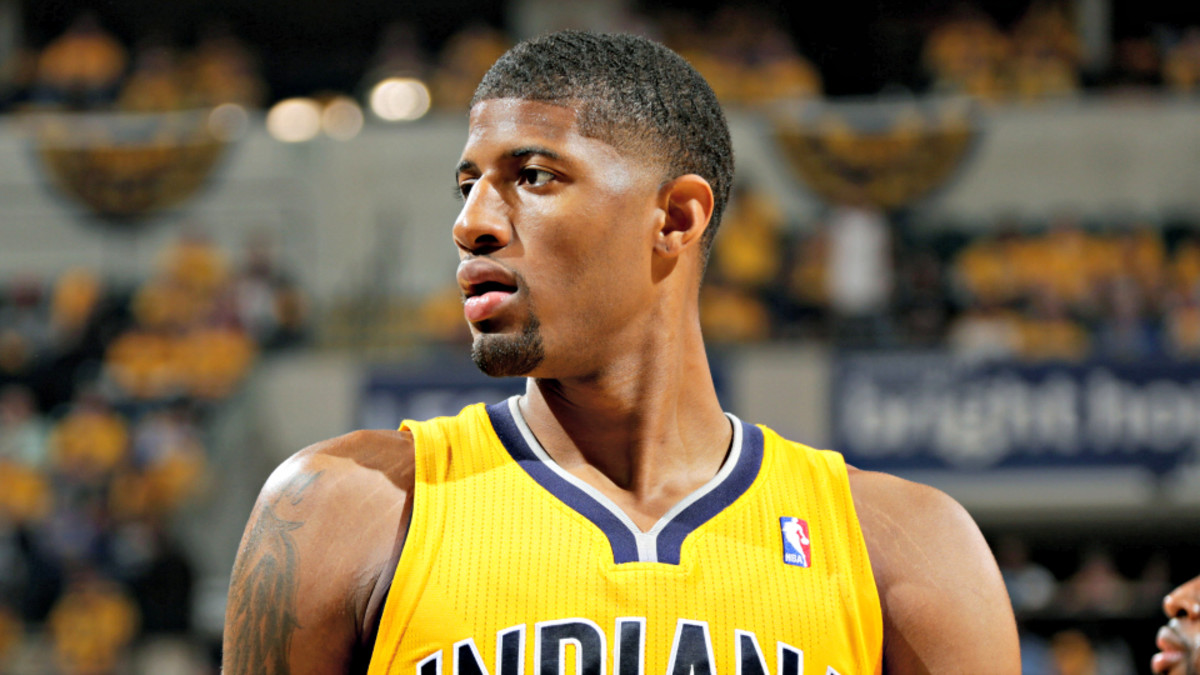
Paul George's grisly injury may spell doom for next season's Pacers
Watching Paul George's horrific leg injury on Friday night was a visceral experience. One can only imagine the pain and terror of actually having lived it, of which George betrayed little. Just moments after feeling the very structure of his body give out, the 24-year-old lay on the floor as collected and calm as possible. Terrified fans stared on. The other participants in Friday's USA Basketball scrimmage were visibly distraught. Yet every view of George showed a man composed in spite of agonizing pain. Such was a lesson in this ghastly episode: Paul George, through leg break and all, is tough as freaking nails.
That bodes well for George's work in rehabilitation, though it hardly influence the considerable recovery timetable he'll now face. Most projections for George, having suffered a fracture of both the tibia and fibula, put him out of basketball action for more than a year. The disappointment of a season likely lost surely weighs on him already. It also puts the Pacers, who lean on George as their best all-around player, in a perilous basketball position. There can be no doubt that George's long-term health is the chief concern in all of this, though with his surgery complete and fractures of this type yielding little potential for career-altering damage, our attention naturally turns to the team now forced to acclimate to life in his absence.
That team is, in a word, complicated. Indiana finished the 2013-14 season as both the top seed in the the Eastern Conference and the subjects of one of the great collapses in NBA history. The latter was in no way a story manufactured; Indiana rated as the second-worst offensive team in the league after the All-Star break last season, leading only a Sixers team that had been designed to lose. The stories swirling around the team were those of in-fighting and finger-pointing, neither indicative of a squad in good collaborative health. The Pacers showed occasional signs of life in the playoffs but ultimately caved in six games against the Heat, the opponent they were specifically designed to beat.
This coming season was to be an attempt at redemption, challenged as it was by Lance Stephenson's departure in free agency. Losing George for the season is just brutal in that regard, both in the Pacers' efforts to make good on the court and re-center themselves as a collective. This is a huge, franchise-shaking loss, as the potential exists for these Pacers to be an abject disaster. Last season Indiana had just two players on its roster at all capable of creating off the dribble. Both are now gone. George and Stephenson were also the Pacer leaders in rebounds and assists per game. That lost production will need to be accounted for in some way, all from a team both without a dominant rebounding big or much ball movement whatsoever. As it stood last season, Indiana's offense was stagnant and empty. The same could be true in the coming year, only without George's bail-out scores and Stephenson's bursts of creativity to carry the Pacers out of historic inefficiency.
Let's be clear that the Pacers, despite their reputation as a post-up team, cannot simply funnel the ball inside more often and hope for the best. Roy Hibbert is not that kind of player; mind you that the 7-2 giant has never once averaged more than 30 minutes per game for good reason, as playing time and usage wear down his already worrisome and generally inefficient offensive game. In the right matchup, Hibbert can put up 20+ and look like a star in the process. Yet he should not in any way be confused for an anchor, as his touches are a case study in diminishing returns on both ends of the floor. David West, too, can little accommodate a drastic shift in usage and role. Age and gradual wear have drawn West out of shot creation over time, as his body isn't all suited for pounding the ball inside as a means of offensive subsistence. He'll dabble in the post and still help as a screener and mid-range shooter, but he offers no answer for what now ails the Pacers.
That's true, in part, because George's absence does damage to Indiana's operations at such a fundamental level. He was a go-to scoring option for the Pacers, if an evidently overmatched one. He was an invaluable source of floor spacing for a team that could hardly manage to keep the paint clear otherwise. And, perhaps most valuable of all: George was the best defender on a team that survived because of its stinginess. Indiana's starting lineup was constructed and groomed to hold steady at all positions while funneling everything inside towards Hibbert. That strategy yielded the best overall defense in the NBA last season, through struggles and all. It hardly seems feasible, however, for the Pacers to keep to any redemptive standard on defense without both George and Stephenson -- two talented wing defenders whose absences compound one another.
Every night the Pacers could count on George locking down the best opposing wing, Stephenson hounding the other, West bodying up an opposing power forward and George Hill smothering a crucial ball handler. The synergy therein, earned by logging more time as a five-man lineup than any other in the league over the past two seasons, was essential to Indiana's defensive execution. The ability for each player to control their individual matchup, though, was just as important. Indiana's general defensive structure falls apart when perimeter players can't stay in front of their marks or when Hibbert is forced to move around more than is comfortable. Both could soon become the Pacers' new reality, as they'll go without George and Stephenson and replace them with far lesser defenders in the likes of Rodney Stuckey and C.J. Miles.
Hence, disaster. Useful as Stuckey and Miles might be, they now sit dwarfed by daunting circumstances. Neither is even remotely as capable (or versatile) a defender as the player they'll functionally replace. Both are also notable downgrades on offense, still forced to make do in a system that as of last season starved for movement and playmaking. There's no juice behind what the Pacers run on that end and no standout talent to breathe life into dying possessions. The results, on balance, could be devastating. Indiana is set to compromise what it did well and fall off further in what it already did terribly.
If Vogel can reinvent his offense to function without able ball handlers or all that many shooters, good on him. If the Pacers can tighten the bolts to hold defensively despite their downgrades, they'll deserve to keep playoff competitive. If not, however, it's quite possible that this is the last we'll see of these Indiana Pacers, whose immediate window has very emphatically been slammed shut. This team goes nowhere without George. Beyond that, it faces existential questions after last season's catastrophe and the loss of Stephenson. Indiana's front office has no doubt considered its options in scrapping what remains of this particular core and could be urged along that course if this season goes bust. This is the reality the Pacers now face: Disappointment, disarray, and -- potentially -- dissolution.






























